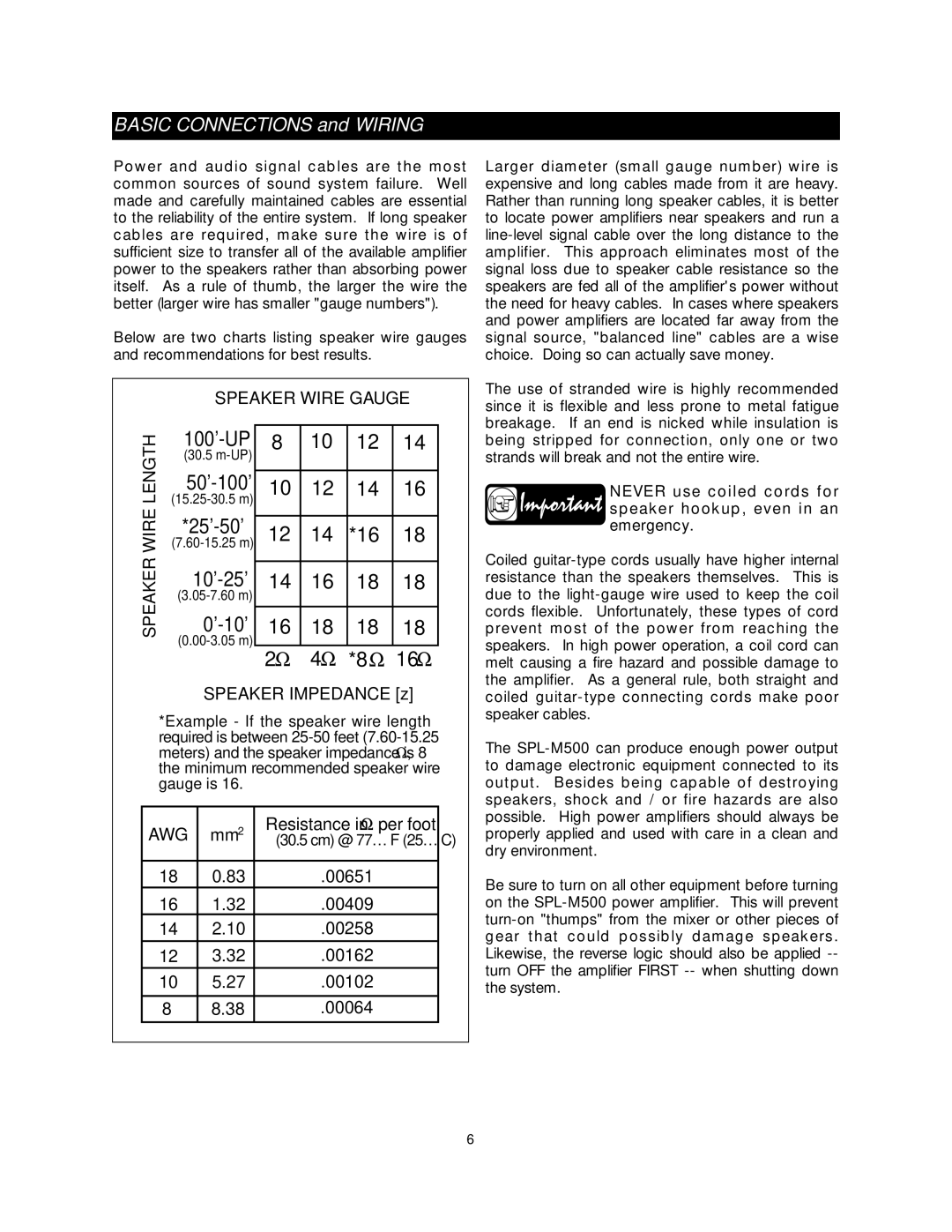SPL-M500 specifications
The Fender SPL-M500 is a premium solid-state combo amplifier designed for a range of musical applications, offering guitarists exceptional tone quality and versatility. This 500-watt powerhouse is ideal for both stage and studio use, catering to the needs of diverse musical genres.One of the main features of the SPL-M500 is its powerful output, delivering an impressive 500 watts of clean sound. This ample power allows musicians to fill large venues without sacrificing clarity or volume. The amplifier is equipped with a specially designed high-frequency driver and a robust woofer, ensuring a full-spectrum sound that captures every nuance of the performance.
The SPL-M500 incorporates advanced sound shaping technologies, giving guitarists the freedom to tailor their tone. Its three-channel design includes a dedicated clean channel, a lead channel with overdrive capabilities, and a third channel that supports various effects. The built-in EQ section features customizable bass, mid, and treble controls, allowing players to sculpt their unique sound easily. Additionally, the amplifier includes an effects loop for integrating external effects processors, enhancing the sound further.
Durability is a hallmark of the SPL-M500, with a rugged construction that can withstand the rigors of frequent use. Its sturdy cabinet is designed to reduce vibrations and reinforce sound integrity, while the grille cloth provides both protection and style. The amplifier is also equipped with a dependable cooling system, ensuring optimal performance even during prolonged use.
For those who appreciate connectivity, the SPL-M500 is equipped with multiple inputs and outputs. It includes a balanced XLR output for direct-to-mixer connections, making it easy to integrate into any live sound setup. The amplifier also features a headphone jack, allowing for discreet practice and late-night sessions without disturbing others.
Overall, the Fender SPL-M500 stands out with its powerful sound, versatility, and user-friendly features. Whether you’re a performing artist or a studio musician, this amplifier offers an impressive array of tools to help you unleash your creativity and elevate your playing experience.

